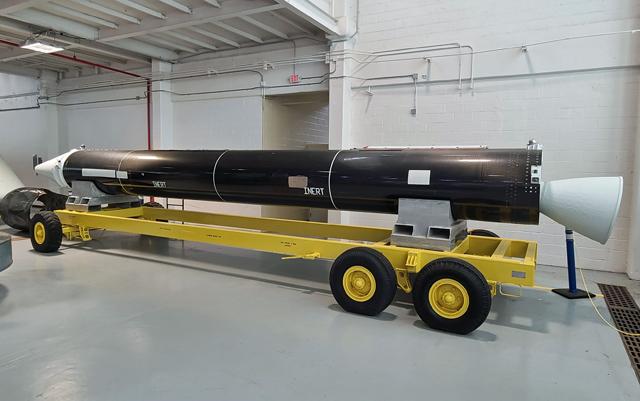
Photo Gallery
Overview
Display location:
- Hangar C, Cape Canaveral Space Force Station
Designation: Alliant Techsystems GEM 40
Thrust: 112,100 pounds
Burn Time: 63.3 seconds
Diameter: 40 inches
Length: 435 inches
Weight: 28,671 pounds
Contractor: Alliant Techsystems
History
Sometimes called a solid rocket “strap-on,” the graphite epoxy motor (GEM) was used to augment launch thrust for the Delta rocket.
This early version of a GEM was normally used in a group of three evenly-spaced around the base of the Delta first stage. Built on the technology of the U.S. Air Force Thor Intermediate Range Ballistic Missile (IRBM), the Delta rocket series became the workhorse for launches at the Cape. This GEM is an inert training device.
Design
The “graphite epoxy” refers to the material used to make the casing. The casing is not made of metal. Instead, a series of long graphite reinforced threads were diagonally wound around a cylindrical form in much the same way as yarn is wound on sewing bobbins.
An epoxy binder is used as “glue” to hold the graphite threads together. This process results in an extremely strong, yet light weight, casing. After the casing is manufactured, it is filled with solid propellant. As last steps, an exhaust nozzle and aerodynamic nose cone are added to the filled casing. The nozzle is fixed in a slightly outward pointing position away from the rocket and is not used for steering.
The Delta GEM departed the Museum storage area for restoration on 9 December 2011 and returned to Hangar R on 24 May 2012.
